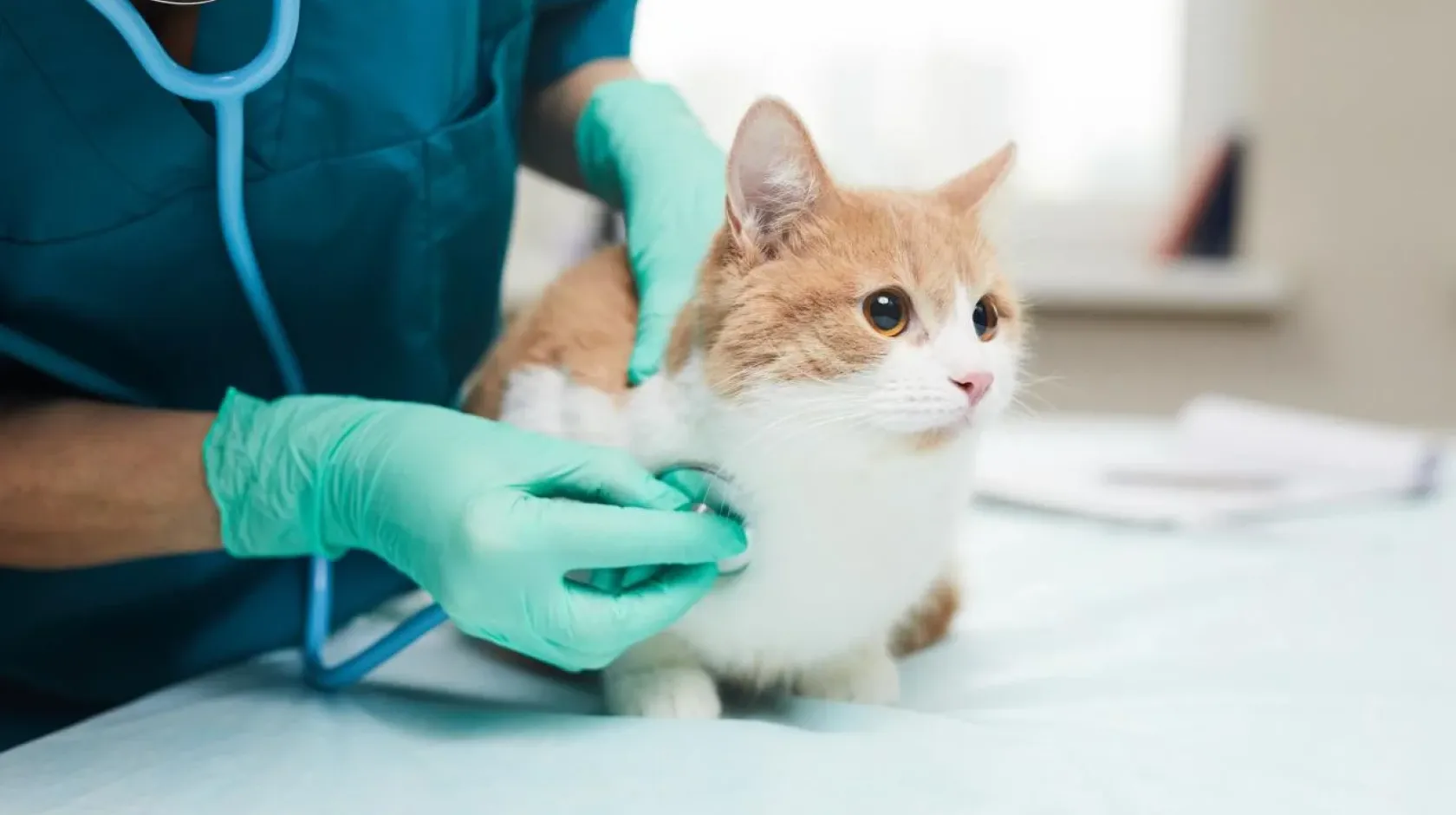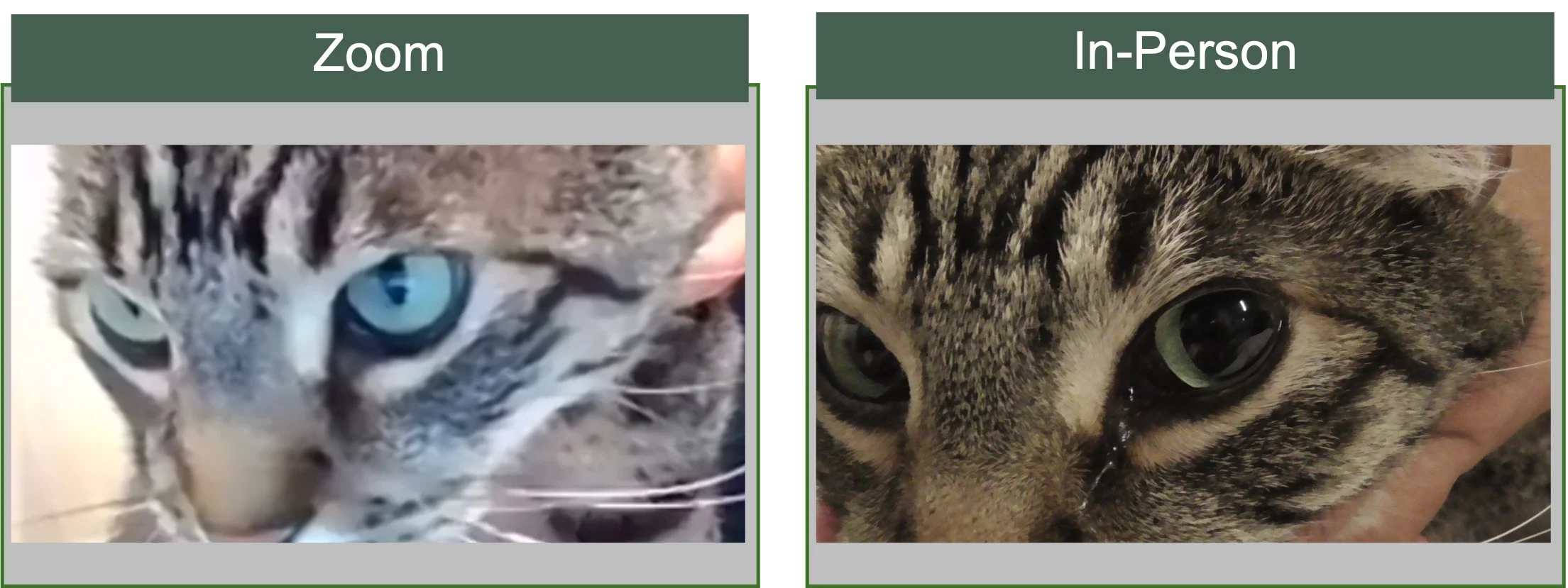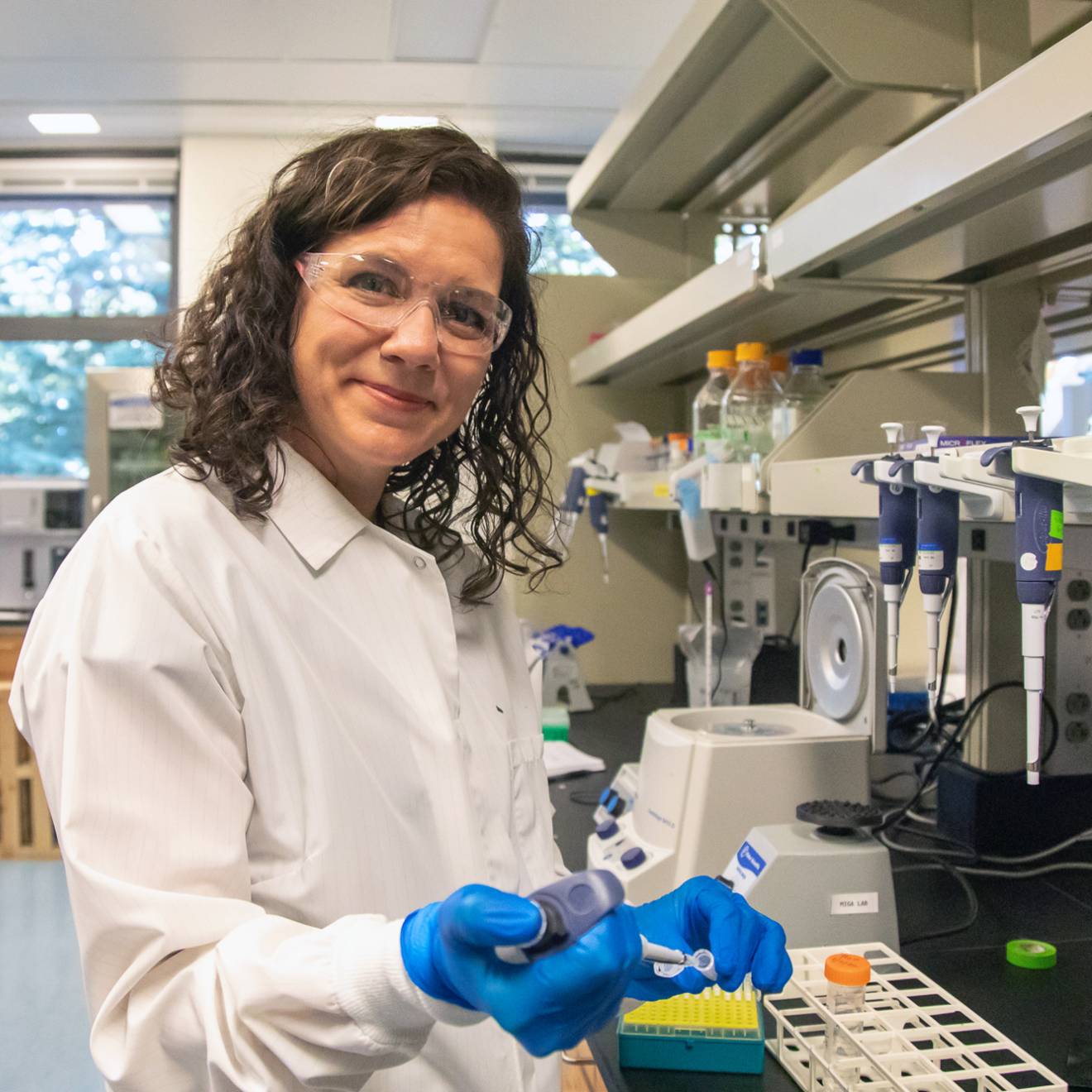Emily C. Dooley, UC Davis

Life turned remote during the COVID-19 pandemic. People worked, learned to cook, chatted with loved ones and completed countless other tasks via video.
Some cats even visited the virtual veterinarian as part of research out of University of California, Davis.
A team of researchers measured how cats reacted to in-clinic appointments versus those conducted by webcam to evaluate if telemedicine could increase access to care for an estimated 45.3 million feline-friendly households in the United States.
The hope is that video telemedicine could help cat owners better care for their pets and manage health or behavioral issues. It could also be especially effective in rural areas with little access to veterinary care.
“Cats tend to not see the vet as much compared to dogs,” said Grace Boone, an assistant specialist in animal welfare epidemiology for the Department of Animal Science. “Telemedicine can fill a gap in care.”
A trip to the veterinary clinic – which entails getting into carriers, traveling to the appointment and exposure to unfamiliar people, pets and smells – can be stressful and overwhelming for cats and their owners, said Carly Moody, an assistant animal science professor who runs the UC Davis Animal Welfare Epi Lab.
Signs of increased stress at in-office appointments
The team worked with Front Street Animal Shelter in Sacramento to stage mock in-person appointments. They also set up video meetings using webcams with those same cats. The sessions happened two weeks apart. Thirty cats and owners participated.
In each visit, the cats were getting mock post-surgery checks as though they had been spayed. The researchers also documented pupil dilation, respiratory rate, lip licking and ear position. In the home sessions, participants lifted the cats for visual inspection and counted their breaths. All appointments were recorded and photos of cat’s eyes were taken to measure pupils.
The research found that cats took more breaths, had larger pupil dilation and more negative ear positions during the in-person examinations compared to the home assessments, indicating increased stress and arousal.
"These results support the idea that video appointments could help reduce stress surrounding veterinary appointments in cats,” Boone said.

In-home assessments could better reflect health and behavior issues because cats are both predator and prey, which means they don’t want to show vulnerabilities. They can be sick and not appear like anything is wrong. Being comfortable at home could better reflect how a cat is feeling or if they are in pain.
Behavior is contextual. An animal could limp at home but hide signs of pain in an unfamiliar environment. “They might come into the clinic and look just fine,” Boone said. “It may be better to see them at home.”
Owners were also surveyed before and after the appointments to gauge their feelings. The owners rated in-person sessions more negatively than video appointments.
“People are less stressed during the appointment if they are home,” Moody said.
Telemedicine could be effective for routine consults or quick questions, saving owners from having to take time off work or worrying about transportation. “It’s a strategy to help support owners more,” she said. “Oftentimes it’s used for advice: ‘Do I need to come in?’"
The research was supported by a grant from Maddie’s Fund and the American Society for the Prevention of Cruelty for Animals.
A separate but related effort by the team surveyed 1,300 Americans about their thoughts on telemedicine. Those responses are being evaluated. Additional research measuring cat responses to different appointment types should also be conducted, the researchers said.

